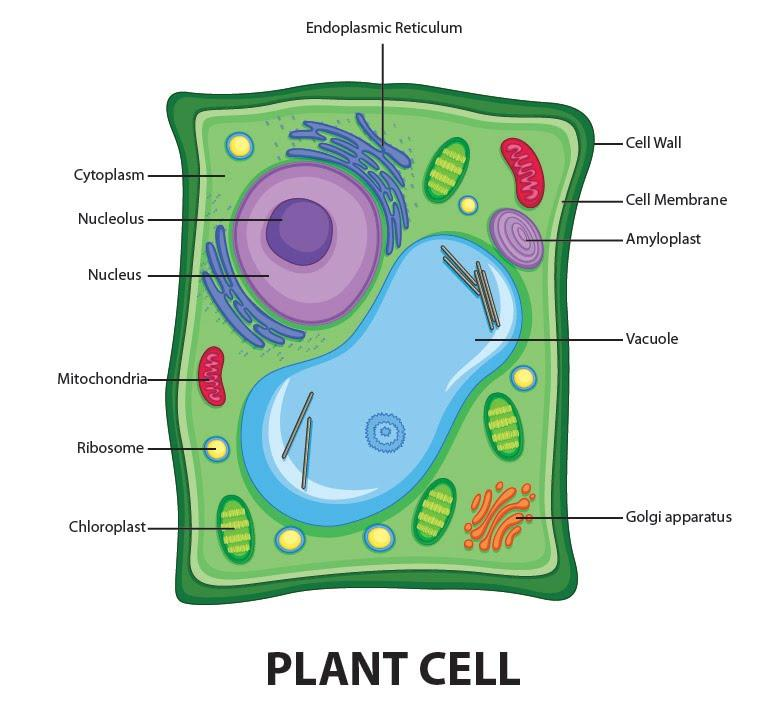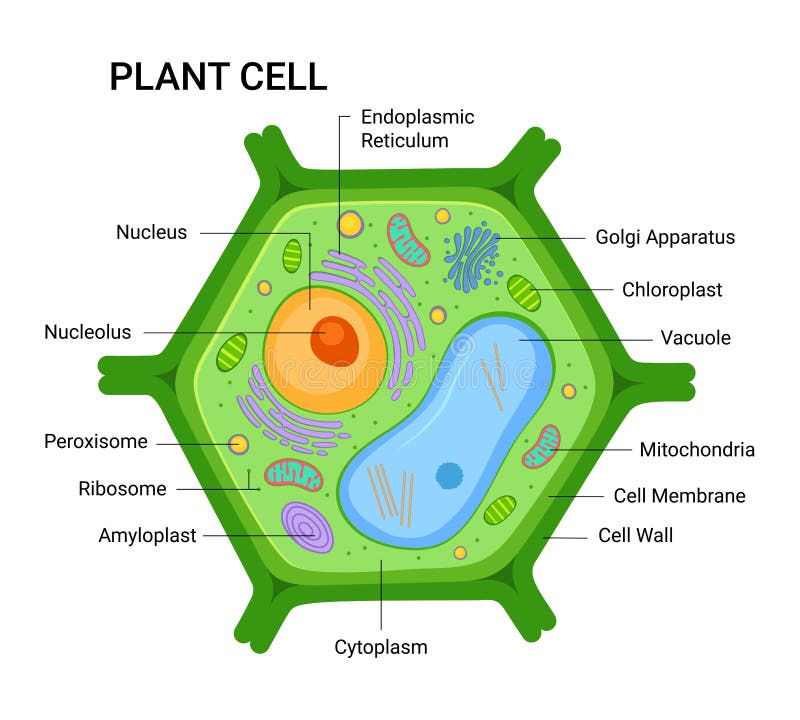
Label parts of diagramme given in page25,and indentify which one is
Your middle school science students can explore the microscopic world of plant cells with our plant cell labeling worksheet. This activity requires no preparation and seeks to give students a thorough understanding of plant cell parts and functions. By labeling a plant cell diagram, 6th or 7th grade students will explore the intricate.

Grade 9 Plant Cell Diagram Simple joicefglopes
The parenchyma cells are the most common cell type and are found in the vascular bundles, leaves, and epidermis of the plant. Some common examples of parenchyma cells are guard cells, chlorenchyma cells (involved in photosynthesis). iii. Collenchyma Cells: Collenchyma tissues are made of collenchyma cells. They also do not have a secondary cell.

South Pontotoc Biology Plant and Animal Cell Diagrams
Plant Cell Structure and Parts Explained With a Labeled Diagram We know plants from time immemorial and they are a part of our day-to-day life, either directly or indirectly, but do we actually know what does a plant cell structure look like? What are the different plant cell parts and their functions? Here are the answers.

Labeling a Plant Cell 195 plays Quizizz
List of Types of Plant Cell 1. Parenchyma cells Parenchyma cell definition Structure of parenchyma cells Functions of the Parenchyma cells 2. Collenchyma cells Collenchyma cell definition Structure of collenchyma cells Types of collenchyma cells Angular collenchyma Annular collenchyma Lamellar collenchyma Lacunar Collenchyma

Plant Cell Diagram Labeled Simple
Below is a list of the main parts shown in the plant cell diagram and the roles that they play in the cell. Nucleus - contains the genetic information of the cell. Nuclear envelope - double membrane surrounding the nucleus. Perinuclear space - space between the two membranes of the nuclear envelope.

Plant Cell Labeled ABC Worksheet
Plant cells are eukaryotic cells, that are found in green plants, photosynthetic eukaryotes of the kingdom Plantae which means they have a membrane-bound nucleus. They have a variety of membrane-bound cell organelles that perform various specific functions to maintain the normal functioning of the plant cell. Table of Contents

Cell Membrane Images Worksheet Answers
A plant cell contains a large, singular vacuole that is used for storage and maintaining the shape of the cell. In contrast, animal cells have many, smaller vacuoles. Plant cells have a cell wall, as well as a cell membrane. In plants, the cell wall surrounds the cell membrane. This gives the plant cell its unique rectangular shape.

Diagrammatic representation of a generalized plant cell depicting the
turgor See all related content → plant cell, the basic unit of all plants. Plant cells, like animal cells, are eukaryotic, meaning they have a membrane-bound nucleus and organelles. The following is a brief survey of some of the major characteristics of plant cells. For a more in-depth discussion of cells, see cell.
Animal Cell Images With Labels / Plant cell and animal cell ShowMe
What is a Plant Cell? Plant Cell Diagram Plant Cell Structure Plant Cell Types Plant Cell Functions What is a Plant Cell? Plant cells are eukaryotic cells that vary in several fundamental factors from other eukaryotic organisms. Both plant and animal cells contain a nucleus along with similar organelles.

flower diagram without labels
A diagram of a plant cell with the organelles labeled The plant cell has many different features that allow it to carry out its functions. Each of these structures, called organelles, carry out a specialized role. Animal and plant cells share many common organelles, which you can find out more about by visiting the " Animal Cell " article.

Draw a welllabelled diagram of a plant cell.
This will teach you how to draw plant cell diagram easily. This is a step-by-step dr. #plantcell #howtodraw #adimushowThis is an easy drawing of a plant cell.

plantcelldiagram Tim's Printables
The graphic below illustrates the key parts of the plant cell. Diagram of a plant cell. Licensed from Shutterstock. Cell wall. The outer covering of the cell, the cell wall is a rigid membrane that contains cellulose (a carbohydrate that is indigestible for humans). The cell wall protects the parts inside, and the cellulose molecules in the wall provide the support and rigidity needed to.

A Labeled Diagram of the Plant Cell and Functions of its Organelles
A plant cell is the basic building block of a plant. Plant cells, like all eukaryotic cells, contain a nucleus and other organelles, each with its distinct functions. However, plant cells also possess unique components that differentiate them from animal, fungal, and bacterial cells. Plant Cell Characteristics Plant cells are eukaryotic.

Explain the nucleus of a cell with a neat labeled diagram Science
3. DNA, the heredity information of cells, which can be found in a nucleus of eukaryotic cells and the a nucleoid region of prokaryotic cell. 4. ribosomes, or protein-synthesizing structures composed of ribosomes and proteins. These structures can be found on the image of the plant cell (Figure 3.1.2.1 3.1.2. 1 ).

NCERT Class 9 Science Solutions Chapter 5 The Fundamental Unit of Life
A Labeled Plant Cell Amyloplasts A major component of plants that are starchy in nature, the amyloplasts are organelles that store starch. They are classified as plastids, and are also known as starch grains. They are responsible for the conversion of starch into sugar, that gives energy to the starchy plants and tubers.

Plant Cell Model Labeled Land to FPR
Plant Cell Diagram 1) Cell Wall It is the outermost, protective layer of a plant cell having a thickness of 20-80 nm. Cell walls are made up of carbohydrates such as cellulose, hemicellulose, and pectin and a complex organic polymer called lignin. Functions Providing mechanical strength, support, and rigidity to the cell